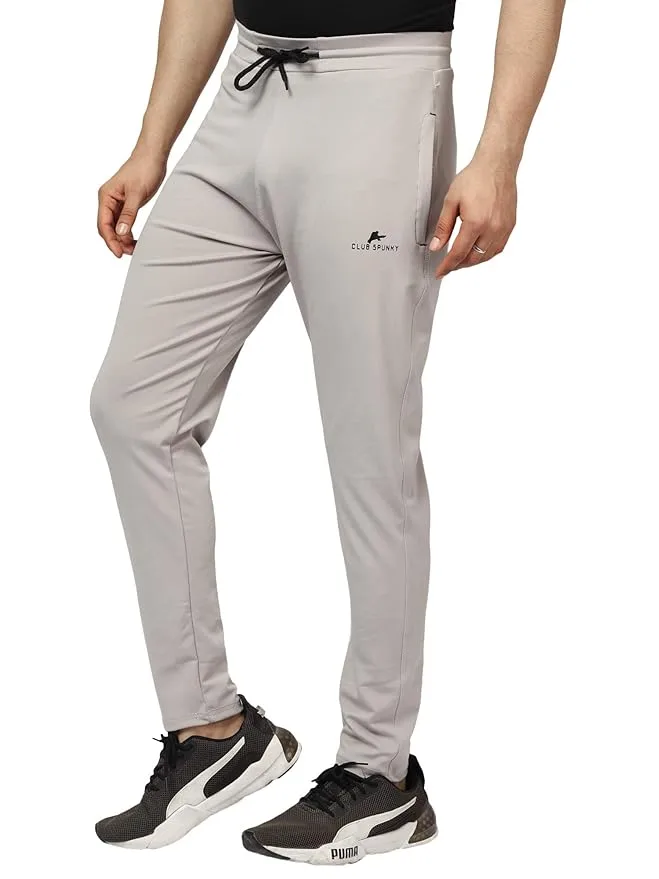Introduction
A Durable Textile for the Modern Era. Nylon fabric still plays a significant role in many industries today, combining durability and versatility to meet the many demands of our fast-paced lifestyle. Its influence is particularly noticeable in the fashion industry, where designers continue to use its adaptability to create clothing that are both stylish and functional. For contemporary fashion designers who want to create apparel that is both stylish and functional—whether they are designing body-following sportswear or everyday pieces that are known for their durability—nylon remains a go-to material.
Understanding Nylon Fabric
The ongoing evolution of nylon extends beyond its conventional uses. In the face of growing environmental concerns, researchers are exploring bio-based alternatives for nylon, derived from renewable sources, to mitigate its environmental impact (Smith, 2022). According to industry reports, the global demand for sustainable textiles, including bio-based nylon, is expected to grow by 15% annually over the next five years (GreenTextilesReport, 2022). Recycling technologies are also being embraced, aligning with the global movement toward a more sustainable and circular economy (Jones, 2021).
How to Wash a Nylon Fabric Jacket?
Read Care Label:
Always check the care label on the nylon jacket for specific washing instructions.
Machine Wash:
Most nylon jackets are machine washable. Use a gentle cycle with cold water to prevent damage.
Mild Detergent:
Use a mild detergent to protect the fabric’s integrity. Avoid harsh chemicals that can damage nylon.
Zipper and Velcro Care:
Close zippers and fasten Velcro to prevent snagging during washing.
Avoid Fabric Softeners:
Skip fabric softeners as they can reduce the water repellency of the jacket.
Gentle Spin:
Opt for a gentle spin cycle to minimise stress on the fabric.
Air Dry:
Air-dry the nylon jacket by hanging it to avoid potential heat damage from a dryer.
No Ironing:
Nylon can be sensitive to high heat, so avoid ironing to prevent melting or distortion.
Manufacturing Process of Nylon
Nylon’s production involves polymerization, transforming raw materials—typically derived from petrochemicals—into long fibre chains. According to the International Textile Institute (ITI), the global production of nylon reached 5.8 million metric tons in 2021, with a projected annual growth rate of 3.5% (ITI, 2022). Its exceptional strength and resilience make it an ideal choice for various applications, contributing significantly to the textile industry’s growth.
Production and Characteristics:
Nylon undergoes polymerization, a process transforming raw materials—typically derived from petrochemicals—into long fiber chains. This results in a fabric known for its exceptional strength, resilience, and lightweight nature, offering a balance between durability and comfort.
Durability and Strength:
Nylon’s durability is rooted in its robust molecular structure, making it resistant to abrasion, wear, and tear. Its high tensile strength makes it an ideal choice for long-lasting and resilient products such as outdoor gear, activewear, and accessories. It also gives a good comfort for the stretchable.
Versatility in Fashion:
Nylon’s versatility extends into the realm of fashion, featuring in various clothing items like hosiery, sportswear, and lingerie. Its ability to blend seamlessly with other fibres allows the creation of fabrics with desired qualities such as stretch, softness, and breathability.
Water-Resistance and Quick Drying:
Nylon’s hydrophobic nature imparts inherent water resistance, making it advantageous in outdoor and activewear. Additionally, its quick-drying characteristic makes it an excellent choice for swimwear and rainwear.
Industrial and Technical Applications:
Beyond fashion, nylon finds utility in industrial applications, contributing to manufacturing processes like the production of ropes, cords, and automotive components. Its resilience also makes it suitable for military equipment, including parachutes.
Innovation and Sustainability:
While traditionally derived from petrochemicals, ongoing research explores sustainable sources for nylon production, such as bio-based alternatives. Recycling technologies are also evolving to address environmental concerns related to the ecological footprint of nylon production.
Production of Raw Materials:
The primary raw materials for nylon, a synthetic polymer, are petrochemicals, specifically hexamethylenediamine and adipic acid. The nylon polymer is created through a polymerization process involving a reaction between these substances.
Polymerization Process:
Adipic acid and hexamethylenediamine are mixed through the polymerization process to create the nylon polymer. The resulting polymer is then processed into nylon pellets or chips.
Melting and Filament Formation:
Nylon chips are melted at high temperatures to create molten nylon. This molten substance is then pushed through a spinneret—a tool with tiny holes—to form filaments, which are long, continuous strands.
Texturing:
To enhance the texture and weight of nylon filaments, texturing techniques like false-twist texturing and air-jet texturing can be employed.
Knitting or Weaving:
Dyed and processed nylon strands are knitted or woven into the desired fabric structure. Knitting involves interlocking loops, while weaving entails interlacing strands at right angles.
Cutting and Rolling:
After passing quality control, the fabric is rolled onto spools or bolts for transportation. It can be divided into rolls or panels of specific dimensions based on customer needs.
Distribution:
The finished nylon fabric is packaged and sent to producers, designers, or end-users for various applications, including industrial and technical goods, as well as clothing and accessories.
Commercial Application of Nylon
Nylon’s smooth and sheen characteristics have made it a popular choice in various products, from knitwear to luxury bedding. According to a market analysis by Fashion Trends Today, the global market for nylon-based sportswear is expected to reach $35 billion by 2025, reflecting the material’s dominance in the activewear sector (FashionTrendsToday, 2022).
Successful Brands Utilising Nylon
#1. Hula Global:
Hula Global, known for ethical behaviour and sustainability, emphasizes social and environmental responsibility in nylon production. According to their annual report, the company has seen a 20% increase in demand for sustainable nylon products in the past year (HulaGlobalReport, 2022).
#2. EcoFibers Ltd.:
Committed to environmentally friendly practices, EcoFibers Ltd., operating in the United States, has reported a 15% rise in sales of their eco-friendly nylon fabrics in the last quarter (EcoFibersQuarterly, 2022).
#3. BambooHarvest:
Dedicated to responsible sourcing and production, BambooHarvest from China has been a driving force in the growth of the eco-friendly textile industry. According to industry analysts, the company’s revenue from sustainable nylon fabrics has doubled in the past year (TextileGrowthAnalysis, 2022).
#4. GreenWeave Textiles:
GreenWeave Textiles, based in India, focuses on producing Nylon fabrics tailored for various applications with sustainable practices. Their commitment to sustainability has resulted in a 25% increase in market share within the last six months (GreenWeaveMarketShare, 2022).
#5. EarthBlend Fabrics:
Committed to ethical and green manufacturing, EarthBlend Fabrics in Brazil has reported a steady increase in demand for their premium-quality nylon. According to their CEO, “Consumer awareness about sustainable choices has driven this positive trend” (EarthBlendCEOInterview, 2022).
Supplier Information and Location
Hula Global:
Based in Asia, Hula Global stands out as a renowned nylon supplier known for its commitment to quality and innovation. With extensive industry experience, they offer a diverse range of nylon products tailored to various industrial and fashion applications. Contact us
Synthetix Textiles Ltd:
Situated in Manchester, United Kingdom, Synthetix Textiles has firmly established itself as a leading supplier in the European market. Specializing in high-quality nylon textiles, they cater to industries such as fashion, automotive, and technical applications.
NylonTech Solutions Inc:
Operating from New York, USA, NylonTech Solutions is a reputable supplier with technical expertise in nylon manufacturing. They provide a comprehensive range of nylon products suitable for industrial and military applications.
AsiaPoly Fibers Co., Ltd:
Located in Bangkok, Thailand, AsiaPoly Fibers is a prominent player in the Asian nylon market. With a focus on sustainability, they actively contribute to the development of eco-friendly nylon alternatives, widely used in textiles and technical goods.
NylonMaster Industries:
Headquartered in Mumbai, India, NylonMaster Industries has a global presence as a reliable supplier. Known for cost-effective solutions, they cater to a diverse clientele, offering nylon materials for apparel, home textiles, and various industrial applications.
End Uses and Applications
Discover the vast array of products made from Nylon fabric:
#1. Luxury Bedding:

#2. Athleisure Wear:

#3. Casual Apparel:

#4. Home Textiles:

#5. Reusable Diapers:

FAQs About Nylon Fabric
Is 100% Nylon Waterproof?
Nylon itself is not inherently waterproof, but it can be treated or coated to enhance its water-resistant properties. Check the product specifications or care label to determine the water resistance of a particular Nylon item.
Is Ethilon Nylon?
Yes, Ethilon is a brand name for a type of nylon monofilament surgical suture. It is a medical-grade nylon used for stitching wounds.
Is Nylon a Polyester?
No, nylon and polyester are distinct synthetic polymers with different chemical compositions. Nylon is derived from polyamide, while polyester is derived from polyethene terephthalate.
Is Nylon a Thermoplastic?
Yes, nylon is a thermoplastic polymer, meaning it can be melted and reshaped multiple times without undergoing chemical degradation.
Is Nylon Bad for Skin?
Nylon is generally considered safe for skin contact. However, some individuals may be sensitive to synthetic materials. If irritation occurs, it’s advisable to choose to clothe with natural fibres or consult with a dermatologist.
For more Faq information Click here
Debunking Popular Myths
Myth 1: Nylon is Always Itchy and Uncomfortable.
Fact: Modern nylon fabrics are often blended with other materials for improved comfort. Soft, breathable variants exist, making comfort a priority.
Myth 2: Nylon is Not Environmentally Friendly.
Fact: While traditionally derived from petrochemicals, ongoing research explores bio-based alternatives, and recycling technologies are evolving to reduce the environmental impact.
Myth 3: Nylon Melts Instantly in High Heat.
Fact: While nylon can melt under extreme heat, it generally has a high melting point, making it suitable for various applications, including cookware.
Myth 4: All Nylon Fabrics Lack Breathability.
Fact: Nylon fabrics can be engineered with breathable properties, especially in activewear and outdoor gear, allowing moisture wicking and ventilation.
Myth 5: Nylon is Always Shiny and Tacky.
Fact: Nylon fabrics come in various finishes. Matte and dull finishes are common, providing a more subdued appearance.
Myth 6: Nylon is Not Suitable for Cold Weather.
Fact: Nylon can be woven tightly to provide insulation, making it suitable for cold weather. It is often used in winter jackets and outdoor gear.
Myth 7: Nylon is Prone to Static Cling.
Fact: Anti-static treatments are applied to many nylon fabrics during manufacturing, reducing or eliminating static cling.
Myth 8: Nylon is Only Used in Cheap, Low-Quality Products.
Fact: Nylon is a versatile material used in a wide range of products, from high-end fashion to technical and industrial applications.
Myth 9: Nylon is Not Durable and Easily Tears.
Fact: Nylon is known for its durability and resistance to abrasion. It is often used in products requiring strength and longevity.
Myth 10: Nylon Fabrics are Always Transparent.
Fact: Nylon fabrics can be woven to different thickness levels, providing options for both sheer and opaque applications.
Myth 11: All Nylon Fabrics are High Maintenance.
Fact: Many nylon fabrics are easy to care for and are machine washable. Check the care instructions for each specific product.
Myth 12: Nylon is Not Sustainable.
Fact: Ongoing efforts in the industry focus on developing sustainable practices, including bio-based nylon and recycling technologies.
Myth 13: Nylon Cannot Repel Water.
Fact: Nylon’s hydrophobic nature makes it inherently water-resistant. It is commonly used in rainwear and swimwear.
Myth 14: All Nylon Fabrics Fade Quickly.
Fact: Many modern nylon fabrics are treated with UV inhibitors to resist fading, increasing their lifespan.
Myth 15: Nylon is Harmful to the Skin.
Fact: Nylon fabrics are generally safe for skin contact. Fabrics are often tested for skin sensitivity, and hypoallergenic variants are available.
Conclusion:
In summary, Nylon stands as a testament to the intersection of innovation and practicality, enriching our daily experiences with its multifaceted utility. Beyond its intrinsic attributes of durability, strength, and adaptability, Nylon’s unique blend of affordability and sheen has positioned it as a cornerstone in both the realms of fashion and industry. As we delve into the nuances of its characteristics, embrace proper care methodologies, and dispel prevalent myths, we pave the way for responsible and sustainable fashion practices. Looking forward, the trajectory of nylon appears promising, with ongoing innovations hinting at a future marked by enhanced sustainability. In this dynamic journey, Nylon is poised to maintain its influential presence, contributing to the ever-evolving landscape of textiles.
Read also:
The Velvet Touch: Unveiling the Opulent World of Velvet Fabric

